Few studios manage to hook my attention quite like Vanillaware does. Each of Vanillaware’s games is singular and unique in its own way, but still carries the identifiable hallmarks of its developers’ art, thinking, and approach. So with Vanillaware returning to tactics in Unicorn Overlord, I knew I had to see how it fared.
Unicorn Overlord feels like it’s reaching into the past, but in a different manner than most. Rather than drawing on the tiles and turn-based tactics of Tactics Ogre, the inspiration of its sibling Ogre Battle is clear as day. It’s apparent throughout the tense real-time strategy, the carefully laid-out overworld map, and the tiny squads of units running headlong into each other before zooming down to the melee, resolving combat, and swooping back out overhead.
Yet there’s also the Final Fantasy XII Gambit-style system of tactics, a meta-layer of resource collection and allocation, and Vanillaware’s unmistakable style. As much as Unicorn Overlord captures nostalgia for an era of strategy RPGs long gone by, it also brims with new ideas and fresh takes on what you’d normally expect.
Essentially, if you’re looking for a fresh and vibrant take on directing tiny little units around in strategic battles, Unicorn Overlord is it.
Unicorn Overlord (Switch [reviewed], PS4, PS5, Xbox Series X|S)
Developer: Vanillaware
Publisher: Sega/Atlus
Released: March 8, 2024
MSRP: $59.99
Setting the stage for Unicorn Overlord’s story doesn’t take too long. The player takes on the role of Alain, an exiled prince of Cornia, in the lands of Fevrith. A decade prior, Alain and the knight Josef fled the capital after one of Cornia’s generals staged a coup and overthrew the kingdom, donning the name Galerius and the banner of Zenoira. Jump forward to the present, and Zenoira has spent the better part of ten years conquering the known world. A run-in with some Zenoiran scouts kick-starts the rebellion efforts, and the older Alain, trained in war under Josef’s tutelage, is ready to set off and reclaim his throne.
The Liberation Army, as it’s dubbed, starts out small with just Alain, Josef, and the prince’s childhood friends. Predictably, the group grows as Alain and company reclaim land across Fevrith. Landing in Cornia, then spreading out to nations like the arid Drakenhold, verdant Elheim, frigid Bastorias, and the serene religious hideaway of Albion.
Here’s where the uppermost layer of Unicorn Overlord takes place. On its overworld map, large nations are divided into smaller regional chunks, populated with NPCs to talk to, resources to hoover up, and forts and towns waiting for liberation. After winning a battle in the region, you free it from Zenoiran control, and can then spend collected resources to rebuild towns, returning them to their former glory.
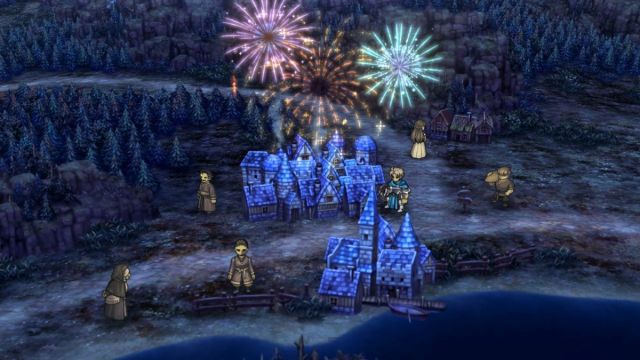
Of course, in these circumstances, the Liberation Army can be seen as an invading force in its own right, and I was happy to see Vanillaware engage with the idea that Alain’s quest to reclaim his throne doesn’t always come off as benevolent. Granted, Alain is still the good guy, and Zenoira is always evil enough at the end of the day to offset any moral grays in a victory. Some of my favorite side quests at least broach these topics though, and encourage the player to grapple with the repercussions as they storm their way across fields and forests towards the next city.
New character recruits also emerge from these quests, either on the side or as part of the main story, and many of them are incredibly memorable. Most of their characterization happens in their personal quests or Rapport conversations. Fire Emblem fans will be familiar with how units can build relationships by fighting together in one unit, opening up brief vignettes of the pair bonding.
Though they’re unvoiced and fairly short, the Rapport conversations contain some of my favorite little character moments, whether it’s the lancer Chloe and half-elf archer Ridiel sharing a fun conversation, or Clive and another cavalier discussing what it means to be knight. The writing shines here, too; while it’s solid throughout, the crafted barbs and lofty musings shine brightest in character-specific missions, where the art and story combine to craft memorable additions to Alain’s forces. The dark-elf resistance fighter Rosalinde, swamp witch Yahna, radiant knight Monica, and bulky hammer-swinging Mordon were among some of my many, many favorite fighters to get to know.
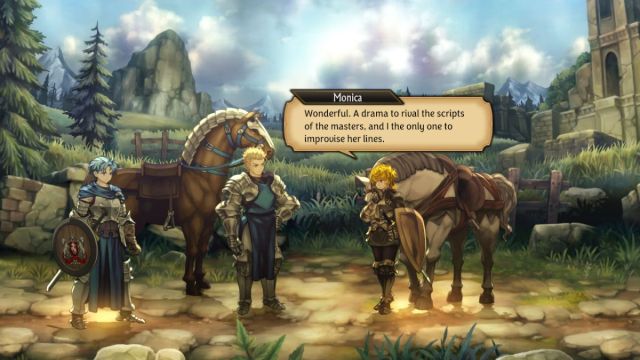
The loop of conquering new territory and acquiring new units, then rebuilding towns and reinforcing unit relationships, and finally gearing up for the next fight creates a whirring, humming engine at the core of Unicorn Overlord. It’s so, so easy to think you’ll hop back on just to gather some resources and liberate a town. Then you’re still awake, hours later, deep into the next leg of the Liberation’s advance.
As for the main story of Alain reclaiming the throne and taking down Galerius, it’s not a stumble, but it does tread a lot of familiar territory for fantasy fans. The prince and his childhood friend Scarlett both contain surprising, magical power, and they must harness it to undo Zenoira’s hold on Fevrith. A lot of lore gets dumped at the 11th hour, and though there are some twists, the more affecting revelations happen between fighters in your army than on a broad scale. I’ve got story qualms, but a lot of them fall away once the battle music kicks in.
Swapping from the peaceful overworld layer into the actual combat, Unicorn Overlord plays like a real-time strategy game. Deploy units from your home base using Valor, and direct them around the field to battle others, fighting for ground and territory leading all the way to the enemy’s command post. It’s straight-forward, at the outset.
As the campaign goes on, Unicorn Overlord starts to introduce all the wrinkles of this strategy layer. Units, made up of anywhere from a single character to a squad of five, act as a single entity on the board. Their movement and traits are determined by the “leader” of the squad; a flying unit can soar over obstacles, while an archer-led unit can rain down fire to assist another unit in battle.

Units have stamina, determining how many fights they can engage in before needing to rest. Terrain types, like a forest, can slow units but also offer cover. The day-and-night cycle even starts to play a factor, as the animalistic bestral warriors get stronger when the moon’s out.
Then, incorporate Valor moves. You can spend Valor accrued from winning fights and seizing control points to deploy more units, or you can spend it to enact special abilities. Warriors can smash the ground, cavalry can lead a thundering charge through enemy ranks, elven archers call down a moving cloud of healing rain, and more. That’s not even getting into battlefield tools, like catapults, ballistae, barricades, mines, and more.
What surprised me most about Unicorn Overlord’s battles were the map designs. The complex tactical bouts – we’ll talk about them soon, don’t worry – were something I already expected to really enjoy tinkering around in. But the variety of objectives and interesting situations the campaign placed me in really surprised me. Vanillaware designs some memorable, devious battlefields to conquer.
In one, I had to hold a defensive line with barricades and ballistae against an advancing front, then pierce into enemy territory to rescue a unit. In another, my advance along a coastal region was beset by warships that could call in reinforcements, so I dispatched my fliers to cut them off. Even on smaller maps, conquerable in under a minute, there are clever set-ups and ideas to play around with.

And then we have the actual fighting itself, which has probably drawn in a wealth of tactics fans and FFXII die-hards alike. When a unit enters battle, their squad squares off with another, and the two duke it out. You don’t have any control over what happens once the fight starts; units automatically spend their Action Points (AP) and Passive Points (PP) to strike, heal, counter, buff, and do whatever they can to emerge victorious.
Their actions are determined through a logical list of if-then statements you set up beforehand. And let me tell you, this screen is where you can spend a lot of time in Unicorn Overlord. Abilities are gained through leveling up, promotion, and through pieces of equipment, and most of them have some kind of qualifier. A spear thrust might do more damage if the unit is at max health, or a special sword strike might recoup the AP spent or heal the unit if it kills its target. So naturally, you’d want to set logic for this: “use only when health is at 100% or higher” for the former, and “prioritize targets with less than 25% health” for the latter.
You can set a certain number of these logical steps for each character, within each unit. And as your army grows, so too grows the number of tactics you’re tinkering with during battles. It might seem overwhelming, and it is, but in a really good way. Where this system could’ve so easily been arduous, Vanillaware makes the tactics screen feel like fine-tuning a high-end car before the big race. I’d hit a wall of combat, a match-up I thought my unit would lose, but after a few minutes spent optimizing my positional layout and tactics, I’d instead emerge victorious. It feels incredibly rewarding to see a unit storm their way across the field, annihilating any foes along the way, and know its success is the fruit of all your labors.
Slowly mastering all these systems and using them in concert to achieve victory on the battlefield feels incredibly good. I’d have moments where units formed a united front, shoving back an invading force or cleverly skirting enemy lines. In one region, I spread all my units out, focusing them on type match-ups that favored them – archers picking off fliers, gryphon knights sweeping through cavalry, etc. – and then brought them all down on a fortified boss. It came together like it was written that way. My prince and his band of units stormed the gates, backed up by a hail of arrows and rain of magical fire, with healers in the back keeping everyone alive.
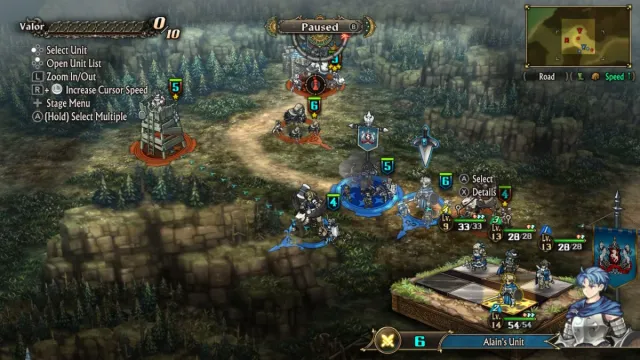
Those moments are where Unicorn Overlord shines, and it delivers them more often than not. It speaks volumes to this game’s combat that I’m itching for a New Game Plus option, to even further advance this army and face greater challenges. There are higher difficulty levels, but that does lead to one wrinkle I have: if you’re familiar with tactics games, you might find the standard difficulty a bit too easy as time goes on. On one hand, it makes Unicorn Overlord incredibly approachable; on the other, I was able to lazily coast through some smaller battles on the default setting.
Battles are also where Vanillaware’s art truly shines. The story scenes will feel familiar to anyone who’s played something like 13 Sentinels, Odin Sphere, or the like. And of course, the food looks great. But battles really shine. Unit animations are gorgeous, and all the strikes have their own flavor and differences between different weapons and types of attack. During one battle in a rainstorm, I watched at the slowest speed I could because of how gorgeous it was when lightning cracked across the sky, cloaking my army in stark shadows. It was, quite simply, striking.
Where Unicorn Overlord really stumbles for me is the repetition. There is a lot of it, over the 50 or so hours I put into seeing the campaign through to its conclusion. Some of it is at least fairly enjoyable; picking up resources isn’t the most gripping activity in the game, but seeing all that lumber and stone turn into renewed life for towns I had just liberated was always pleasant.
Each region has sets of side quests that repeat though, like finding a specific door, or greeting stone carvings in a certain order, or locating cemeteries, and they drag on after a while. Those are optional, thankfully. Others, like rebuilding bridges, aren’t so optional if you want to liberate every town, and you’ll need to play the dreaded quarry mini-game to get a bunch of stone for those bridges. I was fairly done with the quarry game after my third go at it, and when I learned that’s how I would have to uncover all the treasure maps for more optional treasure, I decided I just wouldn’t chase any more maps.
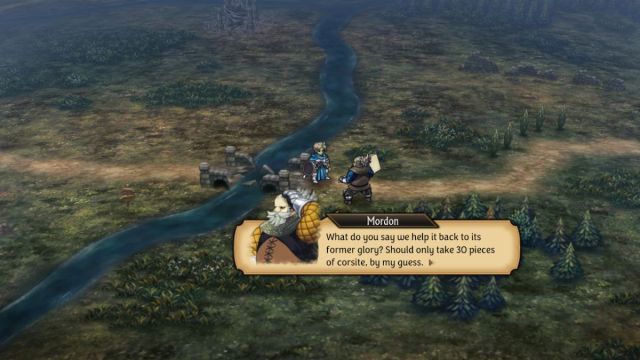
Repetition strikes again in battles where, for as gorgeous and rewarding as they are, I started fast-forwarding and eventually smashing the skip button on a lot of them. For certain match-ups or story-crucial battles, I’d zoom in and watch the fight unfold; but when I’m 25 hours in and my level 25 squad is about to roll over a level 19 unit of random faceless infantry, I don’t need to watch it all play out. I’m glad the option is there to skip, because otherwise, some of the longer fights in this game would’ve felt way too arduous.
Menus and navigation were also a source of frustration for me. It was difficult to sort through all the units I’d accumulated, certain information I wanted wasn’t easy to surface, and Unicorn Overlord throws a lot of everything at you, all the time. Finding where my experience-granting military treatises were, so I could level up a character that was lagging behind others, was always a bit more frustrating than I felt it should have been. I badly crave a way to see which fighters were not already assigned to a unit. Even moving tactics around and altering them can get pretty finicky at times. Quality-of-life features would go a long way towards alleviating some of the little annoyances, as you do spend a lot of time in the menus.
For all these moments and more, though, I just can’t help but love Unicorn Overlord. As an avid RPG follower, it’s been easy to see the trend of nostalgia-driven releases, from remasters and remakes, to spiritual successors, to games clearly inspired by the golden ages. But every time we elevate the giants, I worry that their shadow looms larger over smaller, more fringe aspects of genre history.
Ogre Battle is by no means small, but it is a side of the tactics and strategy RPG genre we simply don’t see as much of compared to Tactics Ogre, whose blueprint would be foundational for the tile-laden turn-based tactics of the future. To see Vanillaware celebrate this era, this age of strategy games, is already compelling in and of itself.
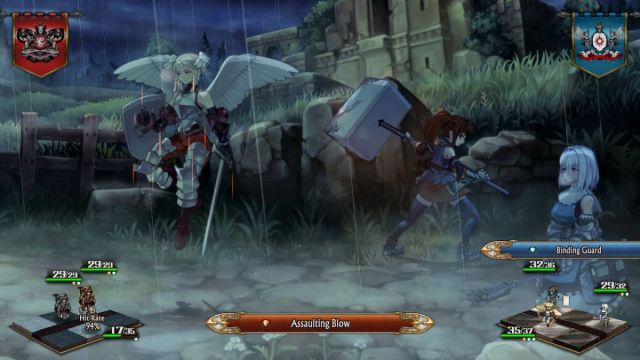
In Unicorn Overlord, Vanillaware captures that style, paints over it with its signature artstyle and music, and infuses it with new life through its battlefield strategies and logical auto-battles. It’s an impressive mix of new and old that defines its own identity and place in the genre’s history.
For any wrinkles I ran into, Unicorn Overlord bowled them over with sheer vision and ambition to be itself, and mostly nailing it. When I was playing Unicorn Overlord late at night on my OLED Switch, it felt impossible to put down. I was always eager for one more battle, to push just a bit further, to continue optimizing and enhancing and building this dream army. To see it roll out against insurmountable odds and still manage to emerge victorious.
Unicorn Overlord is Vanillaware’s custom-built device for capturing the heart of anyone who’s loved watching tiny units bash against each other on a map. It puts a lot of love into each of those units, from what they do and how you can manage them, to their art and direction, down to making each new addition feel impactful. It’s a campaign full of strategy goodness, and I can forgive some quality-of-life nitpicks and repetition when the end result is just this damn good.
[This review is based on a retail build of the game provided by the publisher.]

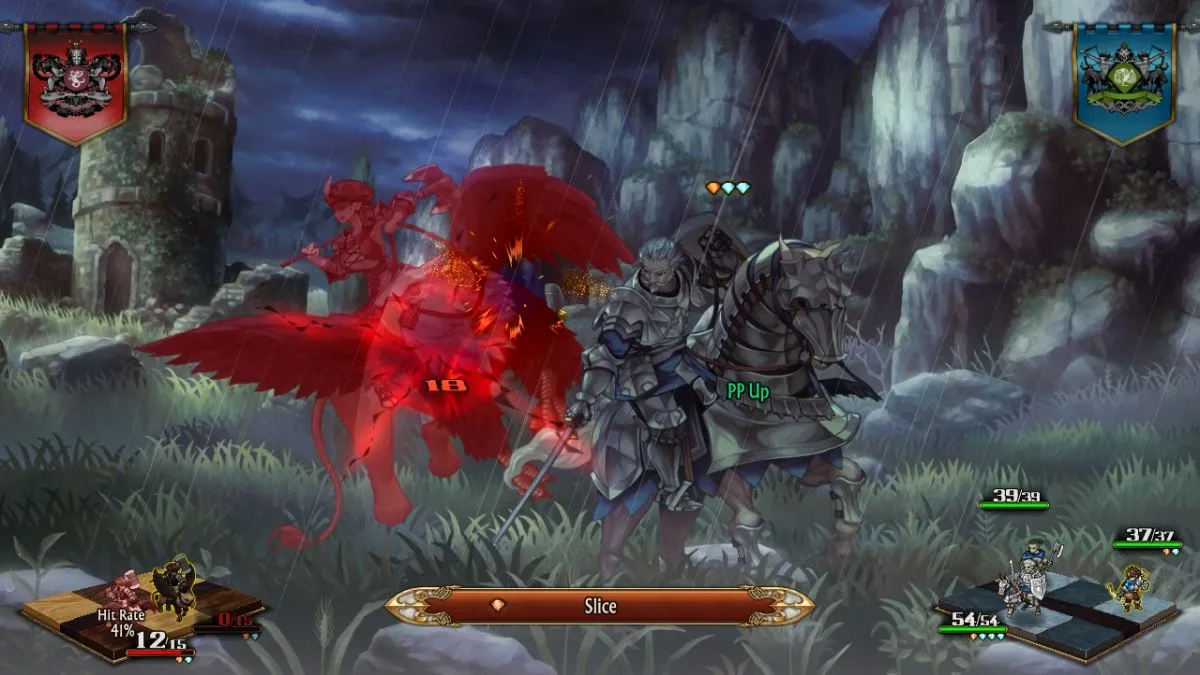


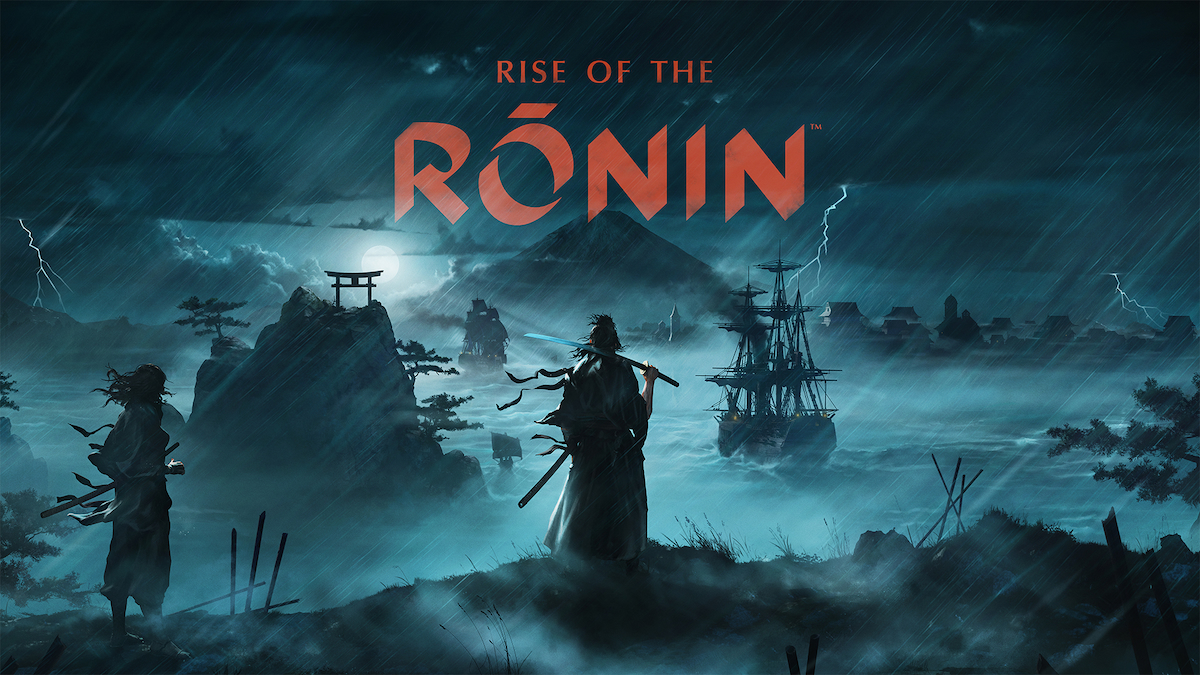
Published: Mar 26, 2024 05:37 pm